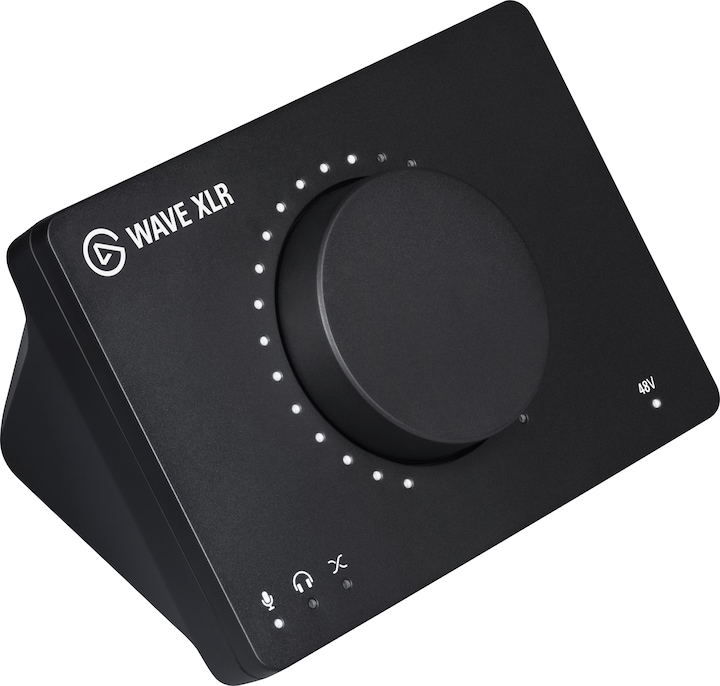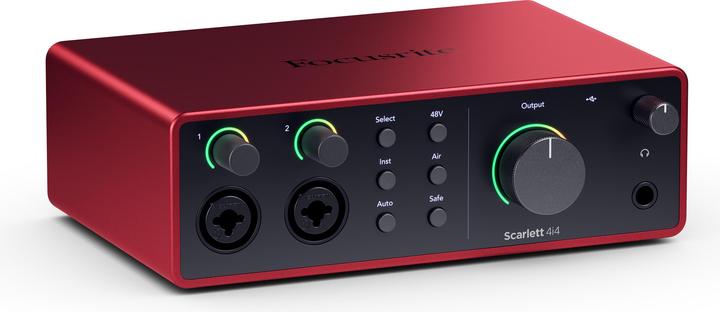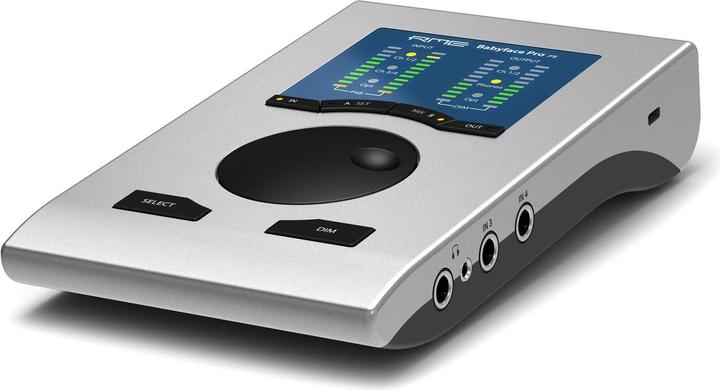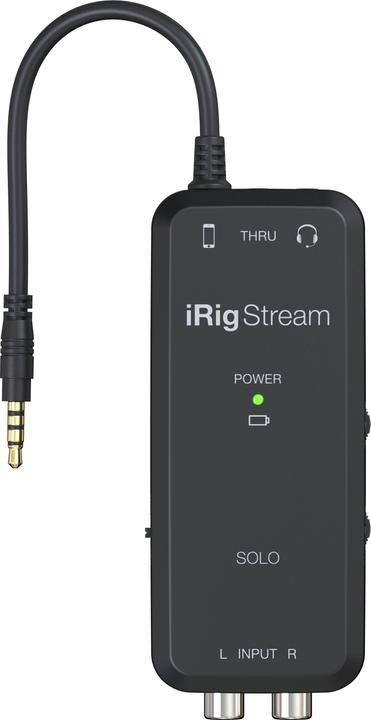
Too Many Audio Interfaces? Here's How to Choose the Right One
Navigate the world of audio interfaces with ease by considering these crucial factors before making your purchase.
Last updated 1 week ago. Automatically generated content.


Select options and limit the number of products
The number of inputs on an audio interface determines how many audio sources you can connect and record simultaneously. Choosing the right number of inputs is crucial for meeting your recording needs, whether you're a solo artist or working with a full band.
Popular options
1 - 3
Typical price
110,– to 270,–Suitable for solo artists or small home studios with minimal recording requirements.
Provides basic functionality for simple recording setups, such as vocals and a single instrument.
Bestseller
4 - 7
Typical price
210,– to 550,–Ideal for small bands or projects requiring multiple microphones and instruments.
Offers greater flexibility and control, enabling simultaneous recording of several audio sources.
Bestseller
8 - 15
Typical price
320,– to 1900,–Designed for professional studios and complex recording setups involving many sources.
Allows for extensive multi-track recording, catering to large groups or intricate productions.
Bestseller
Interface equipment refers to the various input options available on an audio interface, determining its versatility and suitability for different recording tasks. Selecting the right equipment is crucial for ensuring compatibility with your recording needs and enhancing the quality of your audio productions.
Popular options (you can select more than one)
Phantom Power Supply
Provides power to condenser microphones, enabling their operation without external power sources.
Essential for capturing high-quality vocal and instrument recordings with condenser microphones.
Bestseller
Microphone input
Allows connection of microphones for capturing vocals and acoustic instruments.
Enables high-quality audio recordings, ideal for podcasting, voiceovers, and music production.
Bestseller
Guitar/Bass Input
Designed for direct connection of electric guitars and basses, bypassing the need for amplifiers.
Ideal for musicians recording directly to software, providing clear and unaltered sound capture.
Bestseller
Audio outputs on an interface determine how sound is delivered to external devices, impacting sound quality and versatility in audio setups. Choosing the right audio output options is essential for ensuring compatibility with your headphones, speakers, or other audio equipment, enhancing your overall listening and production experience.
Popular options (you can select more than one)
Headphones Out (1x)
Typical price
100,– to 360,–Provides a dedicated output for connecting headphones directly to the interface.
Ideal for personal monitoring, allowing you to hear your mix clearly without external noise interference.
Bestseller
6.3 mm jack (2x)
Typical price
150,– to 290,–Offers dual outputs for standard 6.3 mm audio jacks, commonly used for connecting professional studio monitors.
Suitable for stereo setups, delivering balanced audio output for accurate sound reproduction and mixing.
Bestseller
XLR (2x)
Typical price
520,– to 2400,–Features two XLR outputs, known for providing high-quality, balanced audio signals.
Perfect for connecting to professional audio equipment, ensuring minimal signal loss and interference during transmission.
Bestseller
The connection type of an audio interface determines how it connects to your computer or other devices, affecting data transfer speed and compatibility. Choosing the right connection type ensures optimal performance, reducing latency and enhancing audio quality during recording and playback.
Popular options (you can select more than one)
USB
Typical price
140,– to 460,–Widely compatible with most computers and easy to set up.
Ideal for home studios and beginners, offering reliable performance at an affordable price.
Bestseller
Thunderbolt
Typical price
640,– to 4900,–Provides high-speed data transfer and low latency.
Best suited for professional studios needing superior audio quality and faster processing.
Bestseller
6.3mm jack
Typical price
140,– to 340,–Used for connecting microphones and instruments directly to the interface.
Offers flexibility for musicians who frequently connect various audio equipment.
Bestseller
The brand factor in audio interfaces is crucial as it influences sound quality, reliability, and innovation. Brands like Focusrite, MOTU, and RØDE offer distinct features, catering to different needs from beginners to professional studios.
Popular brands (you can select more than one)
Focusrite
Known for its high-quality preamps and user-friendly design.
Ideal for home studios, offering excellent sound clarity and reliability.
Bestseller
IK Multimedia
Specializes in portable and versatile interfaces for mobile recording.
Great for musicians on the go, offering compact solutions with powerful software.
Bestseller
MOTU
Renowned for professional-grade interfaces with robust performance.
Perfect for complex setups, providing extensive connectivity and low-latency operation.
Bestseller
Audient
Offers premium audio quality with innovative technology.
Suitable for those seeking professional sound with intuitive controls and features.
Bestseller
RØDE
Known for its durable and high-performance audio equipment.
Excellent for podcasters and content creators, providing reliable, broadcast-quality sound.
Bestseller









